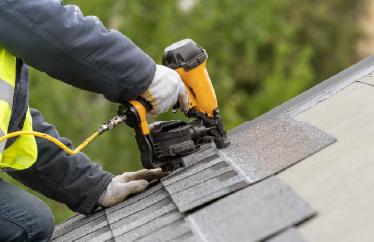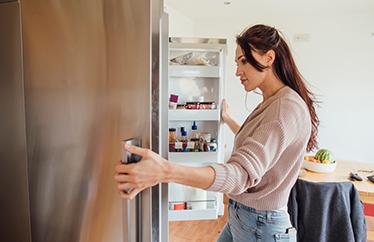Not to be confused with an actual bird, a snowbird is a person who moves to a warmer location during the winter to avoid the cold. Traditionally, most snowbirds have been retirees, since they generally have the time and financial means to plan a seasonal escape. However, younger demographics who have the ability to work remotely have also started to claim the snowbird title.
Being a snowbird is all about having more freedom over your lifestyle, but it also comes with extra responsibility, usually in the form of a second home, RV or vacation rental to maintain. That’s why it’s crucial to be prepared. Here are 6 tips to have a worry-free winter as a snowbird.
1. Inspect your insurance
To be a snowbird, you have to think ahead when it comes to your insurance, specifically your homeowner’s insurance. When insuring your primary residence, second home and any rental properties, it’s important to be honest about which properties you use for which purposes—and what the safety and insurance concerns are for each one. Your primary residence is the place you live most of the year. If you live in Cleveland nine months out of the year, for example, but spend three months in San Diego, Cleveland is your primary residence.
Of course, some people spend equal amounts of time at their different residences; if this is the case, the insurance industry standard is that the state where you hold your driver’s license is considered your primary residence.
Speaking with a trusted insurance professional can help you get the proper coverage for your homes and belongings, no matter where you spend the winter.
2. Downsize your stuff
Before you take flight for the season, work on downsizing as much as possible. How and what you downsize depends on where you’re going, what your day-to-day lifestyle will be and what you’re leaving behind, but it’s helpful to think about what went right—or wrong—during your past snowbird seasons.
If, for example, you over-packed your RV last winter, you may want to cut down on the amount of stuff you bring this season. Or if you’re renting out your primary residence while you’re gone, you might want to pack up some of your personal items to put in storage.
3. Stick to a snowbird budget
Just as with a regular household budget, the key to creating a snowbird budget is to be realistic. The best budget should give you enough freedom to enjoy your winter retreat without blowing your savings. To determine your ideal budget, work backward.
Start by imagining your dream snowbirding environment, then research costs in the area. Think: average rentals, activity costs, transportation, groceries and dining out. Don’t forget to factor in your primary residence costs as well. Even though you’re technically away from home, you’ll still have to pay your mortgage or rent, as well as utilities, insurance and upkeep costs.
If you’re overwhelmed at the prospect of budgeting, consider investing in a financial planner. Financial planners can help you determine your spending limits and set you up for a successful snowbirding season.
Pro tip: Be sure to account for travel costs. Whether it’s wear and tear on your vehicle, fuel costs or plane tickets, travel expenses can eat into your snowbird budget.
4. Plan for proper home maintenance
As a snowbird, you have to be proactive about keeping your various residences in good condition. If you have a residence in a warm-weather area, you may need to consider landscaping upkeep, pool maintenance, pest control and mold checks.
For cold-weather properties, you have to invest time in winter home maintenance to protect your home against harsh weather and freezing temperatures. Before you leave for the winter, make sure your home is prepped for the winter months to maximize winter energy savings and protect your property from cold weather damage.
5. Invest in smart home devices
Smart home devices are a simple way to protect and preserve your home, not to mention give you peace of mind. That’s because smart home devices use the latest technology to provide you with security, comfort and convenience—whether you’re at home or away.
Depending on your home’s current setup, you may want to install leak detectors, smart lighting, programmable thermostats or a fully monitored home security system. With your smartphone as a control center, you’ll be able to remotely monitor the safety and security of your home at all times.
6. Get packed
Once you’ve chosen the perfect location for your snowbird season, nailed down a budget and prepared your home, it’s time to get packed. Here’s a quick checklist to get you started:
- Important documents: Gather your ID, insurance policies, contracts, any pertinent medical information and contacts for utility companies at both your primary and snowbird residences.
- Warm layers: Include light jackets, scarves, sweaters and a raincoat just in case. As for shoes, don’t rely solely on sandals. Comfortable walking shoes, hiking boots and a few dress shoes are sure to come in handy.
- Medications and a first aid kit: Along with a standard first aid kit, pack your prescriptions and medications in a safe and convenient location. It’s also a good idea to let your doctor know you’ll be out of town and ask how you can refill any necessary prescriptions from afar.
- Tech devices: If you’re bringing items like a laptop, tablet, smartphone or fitness tracker, make sure you pack the accompanying chargers, adapters and batteries as well.
Pro tip: Consider what other household necessities or equipment you might need to bring to your snowbird destination. If you’re traveling to a second home, you probably already have a basic idea of what you need to bring. However, if you’re vacationing somewhere new, it’s smart to ask the right questions ahead of time. For example, will you need towels and linens? What sizes are the beds? Will you be able to find your favorite coffee? Where can you do laundry? What types of items can you buy easily once you arrive? You want to be as prepared as possible without overpacking.
Snowbird in style
Whether you’re choosing the snowbirding lifestyle for health reasons, adventure or wanderlust, it’s critical to think proactively about the home you’re traveling to and the one you’re leaving behind.
Hippo is here to answer any questions you might have about insurance coverage. If you’re not a Hippo customer yet, give us a call to learn more or grab an instant quote. We’re here to make sure your snowbirding experience is everything you hoped for.




